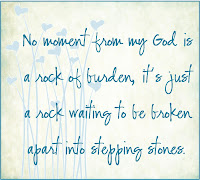
Tara Parker-Pope on Health
February 6, 2012, 12:01 AM
How Massage Heals Sore Muscles
By ~by Nicholas Bakalar
Researchers are learning how massage soothes aching muscles.
A massage after vigorous exercise unquestionably feels good, and it seems to reduce pain and help muscles recover. Many people — both athletes and health professionals – have long contended it eases inflammation, improves blood flow and reduces muscle tightness. But until now no one has understood why massage has this apparently beneficial effect.
Now researchers have found what happens to muscles when a masseur goes to work on them.
Their experiment required having people exercise to exhaustion and undergo five incisions in their legs in order to obtain muscle tissue for analysis. Despite the hurdles, the scientists still managed to find 11 brave young male volunteers. The study was published in the Feb. 1 issue of Science Translational Medicine.
On a first visit, they biopsied one leg of each subject at rest. At a second session, they had them vigorously exercise on a stationary bicycle for more than an hour until they could go no further. Then they massaged one thigh of each subject for 10 minutes, leaving the other to recover on its own. Immediately after the massage, they biopsied the thigh muscle in each leg again. After allowing another two-and-a-half hours of rest, they did a third biopsy to track the process of muscle injury and repair.
Vigorous exercise causes tiny tears in muscle fibers, leading to an immune reaction — inflammation — as the body gets to work repairing the injured cells. So the researchers screened the tissue from the massaged and unmassaged legs to compare their repair processes, and find out what difference massage would make.
They found that massage reduced the production of compounds called cytokines, which play a critical role in inflammation. Massage also stimulated mitochondria, the tiny powerhouses inside cells that convert glucose into the energy essential for cell function and repair. “The bottom line is that there appears to be a suppression of pathways in inflammation and an increase in mitochondrial biogenesis,” helping the muscle adapt to the demands of increased exercise, said the senior author, Dr. Mark A. Tarnopolsky.
Dr. Tarnopolsky, a professor of pediatrics and medicine at McMaster University in Hamilton, Ontario, said that massage works quite differently from Nsaids and other anti-inflammatory drugs, which reduce inflammation and pain but may actually retard healing. Many people, for instance, pop an aspirin or Aleve at the first sign of muscle soreness. “There’s some theoretical concern that there is a maladaptive response in the long run if you’re constantly suppressing inflammation with drugs,” he said. “With massage, you can have your cake and eat it too—massage can suppress inflammation and actually enhance cell recovery.”
“This is important research, because it is the first to show that massage can reduce pro-inflammatory cytokines which may be involved in pain,” said Tiffany Field, director of the Touch Research Institute at the University of Miami Medical School. She was not involved in the study. “We have known from many studies that pain can be reduced by massage based on self-report, but this is the first demonstration that the pain-related pro-inflammatory cytokines can be reduced.” she said.
Getting a massage from a professional masseur is obviously more expensive than taking an aspirin. But, as Dr. Field points out, massage techniques can be taught. “People within families can learn to massage each other,” she said. “If you can teach parents to massage kids, couples to massage each other. This can be cost effective.”
Dr. Tarnopolsky suggests that, in the long run, a professional massage may even be a better bargain than a pill. “If someone says “This is free and it might make you feel better, but it may slow down your recovery, do you still want it?” he asked. “Or would you rather spend the 50 bucks for a post-exercise massage that also might enhance your recovery?”
*Correction: An earlier version of this article misidentified where mitochondria are found; they are inside of cells, but in the cytoplasm, not the nuclei.
From today's The Huggington Post:
Massage Benefits: Nine Healthy Reasons To Make An Appointment Today
The Huffington Post ~by Sarah Klein
First Posted: 02/ 8/2012 9:06 am Updated: 02/ 8/2012 9:06 am
Last week, a new study found that massage really does work to ease those sore muscles after a tough workout. Just 10 minutes can reduce inflammation, which can help your body recover.
However, the health benefits of touch extend beyond simply soothing aches and pains. Of course, the stressed-out have been proponents of the anxiety-busting procedure for decades. But a growing body of research suggests that a rubdown is even better for you than you think.
1.) Manage Anxiety and Depression. For the same reasons that a massage is relaxing, it can also soothe anxiety and depression. Massage reduces levels of the stress hormone cortisol resulting in lifted spirits and often lower blood pressure. It can also boost the neurotransmitters serotonin and dopamine, which are involved in depression.
2.) Ease Pain. Eight out of 10 Americans will experience debilitating back pain, according to Time.com, but a massage can help. According to a 2011 study, massage helped people in pain feel and function better compared to people who didn't receive any massage treatment.
"We found the benefits of massage are about as strong as those reported for other effective treatments: medications, acupuncture, exercise and yoga," Dan Cherkin, Ph.D., lead author of the study, said in a press release.
Massage has also been linked to decreased stiffness and pain, as well as better range of motion in people with osteoarthritis.
3.) Improve Sleep. If you've ever dozed off on a massage table, you don't need to be convinced that a massage can promote healthy sleep. A number of studies have examined this link, and chalk it up to massage's affect on delta waves, the kind of brain waves connected to deep sleep, according to Health magazine.
4.) Boost Immunity. Multiple studies, although often small, have linked massage to better functioning of the immune system.
In one 2010 study, researchers found massage increased a person's disease-fighting white blood cells. The stress-reducing powers of massage can also help keep you healthy.
5.) Beat PMS. At least one small study found that massage can kick pesky PMS symptoms, like bloating and mood swings, to the curb.
6.) Raise Alertness. Want to boost your brainpower? Adults who were given a 15-minute chair massage in a small 1996 Touch Research Institute (TRI) study were more alert and completed a series of math questions faster and more accurately.
7.) Curb Headaches. Just like muscle and back pain, headaches can also be alleviated thanks to massage. A regular rubdown can reduce a person's number of migraines, according to WebMD, as well as limit how painful each migraine feels, according to the TRI.
A 2009 study found that a 30-minute massage decreased pain for people with tension headaches,and even curbed some of the stress and anger associated with that pounding head.
8.) Save Face. A little prodding in the right places can even have beauty benefits. "Massage increases blood flow, which plumps up slack skin, encourages lymphatic drainage (the shuttling of toxins out and away from cells so that more nutrients can travel in) and adds vitality to a dull complexion and lackluster hair," Kimara Ahnert, a New York City skin-care studio owner told Women's Health.
And you don't even have to make an appointment -- simply rubbing your face and scalp for a few minutes can make a big difference.
9.) Ease Cancer Treatment. Because of many of the benefits listed above, massage is particularly helpful for people living with or undergoing treatment for serious illnesses, like cancer. Various studies have shown that massage can relieve fatigue, pain, anxiety, depression and nausea in cancer patients.

http://well.blogs.nytimes.com/2012/02/06/how-massage-heals-sore-muscles/?ref=health
http://www.huffingtonpost.com/2012/02/08/massage-benefits-health_n_1261178.html#s672045&title=Manage_Anxiety_And










































No comments:
Post a Comment